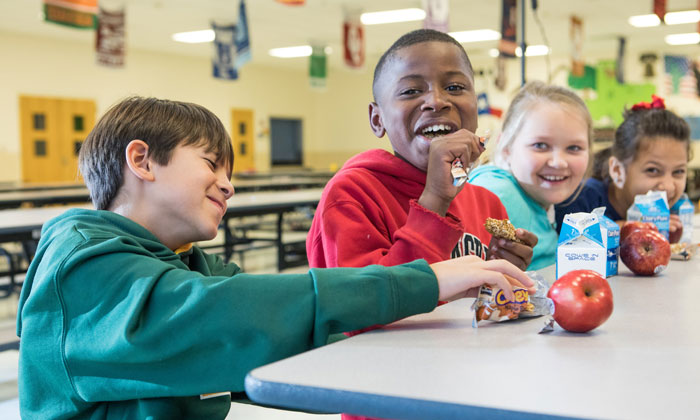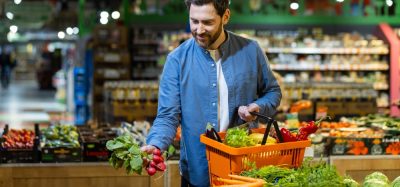PepsiCo exclusive: The ‘Food for Good’ initiative
- Like
- Digg
- Del
- Tumblr
- VKontakte
- Buffer
- Love This
- Odnoklassniki
- Meneame
- Blogger
- Amazon
- Yahoo Mail
- Gmail
- AOL
- Newsvine
- HackerNews
- Evernote
- MySpace
- Mail.ru
- Viadeo
- Line
- Comments
- Yummly
- SMS
- Viber
- Telegram
- Subscribe
- Skype
- Facebook Messenger
- Kakao
- LiveJournal
- Yammer
- Edgar
- Fintel
- Mix
- Instapaper
- Copy Link
Posted: 8 August 2017 | PepsiCo, Roy Manuell | Junior Editor | 1 comment
New Food speaks exclusively to PepsiCo on their ‘Food for Good’ initiative and the future potential it holds to change child nutrition for the better.


- For the benefit of our readers, could you briefly explain the history and thinking behind the ‘Food for Good’ initiative?
Food for Good (FFG) was launched in 2009 by a small group of enterprising PepsiCo employees who wanted to make a meaningful impact in their communities. During a meeting with local community leaders in Dallas, TX, child hunger was identified as a pressing issue. Local PepsiCo staff saw an opportunity to use the company’s logistical expertise and technological know-how to serve children who weren’t being reached by other services. After eight years of growth, FFG now delivers healthy meals to children in 18 cities across the country, providing the nutrition they need to learn, play, and grow.
- What degree of success have we seen from the project?
We are incredibly proud of the impact FFG has had on communities to-date.
- Serving Children: Twenty percent of American children struggle with hunger. Their suffering often intensifies over the summer – known as the “hungriest time of the year.” FFG has helped to address this need by serving over 12 million healthy meals with the help of many local partners. Broken down, this represents more than 50 million healthy servings of fresh fruits and vegetables, grains, and dairy. Receiving FFG meals means children have the nutrition to play, learn and grow that they might otherwise lack.
- Supporting Communities: FFG strives to tackle child hunger and support our partners in providing safe and nurturing environments for children to learn and play. The program works in 18 cities across the country, giving communities who aren’t being reached by other services access to healthy meals year-round. This summer, FFG entered three new markets – Anaheim, CA, Miami, FL, and Northwest Arkansas – enabling 1,300 more children to be served.
- In Dallas, TX, one grandmother shared that the meals and activities provided through the local YMCA’s afterschool program have helped been vital in enabling her to manage caring for her five grandchildren.
- Creating Jobs: Our people are the heart of our FFG operations. We draw our teams from the communities we serve. This is part of how we build FFG into the fabric of each community, maintain a strong connection with the local people and deliver a better service. By the end of 2016, the program had created more than 150 jobs (100 full-time, year-round and 50 summer seasonal) managing warehouses and delivering food. FFG’s local non-profit partners create another 100 jobs each summer, providing the children we serve with physical activity and nutrition education. In addition to the professional opportunities available through the program, FFG also works with PepsiCo field operations to give our staff the opportunity to be promoted into warehouse and sales positions throughout PepsiCo.
- In 2010, Derrick Bradley joined FFG’s warehouse operation in Dallas, TX. Before FFG, Derrick was a school bus driver who found himself out of work and struggling financially in the summer months. On the FFG team, Derrick’s strong work ethic and drive for excellence quickly made him stand out. He was referred to, and hired by, Frito Lay as a Route Sales Representative and within three years, and was subsequently awarded the Route Sales Representative of the Year.
- One employee in Austin, TX was living in a shelter with her children the week before she started working with FFG. While in the shelter, her children relied on FFG meals. FFG is committed to feeding hungry children and providing employment opportunities in low-income and underserved communities.
- What does the future hold for Food for Good?
Scalability is central to the FFG business model and we’ve set ambitious goals for the future. By 2025, we aim to have a presence in 25 cities, including 5 outside the U.S., and provide 50 million servings of nutritious food every year.
This objective was set last year as part of PepsiCo’s Performance with Purpose 2025 Agenda, specifically PepsiCo’s goal of providing underserved communities with access to at least 3 billion servings of nutritious foods and beverages by 2025.
PepsiCo has also set goals to increase positive nutrition—such as whole grains, fruits and vegetables, dairy, protein, and hydration. FFG has a key role to play in this as a driver of innovation for products that meet strict nutritional standards and are accessible to lower income consumers.
- Please elaborate on how FFG has spurred the creation of new products and technologies within PepsiCo.
FFG works with the research and development teams at PepsiCo to explore and create new products that are suitable for program participants and PepsiCo’s broader consumer base. This means that they must meet the dietary requirements of federal nutrition programs, and be available at an affordable price point. This product innovation supports the expansion of PepsiCo’s Everyday Nutrition product portfolio, part of the transformation of the company’s range of foods and beverages under the Performance with Purpose 2025 Agenda. For example, FFG prompted the creation of a Maple Brown Sugar Quaker Chewy Bar, Life Cereal “Bowl pack,” and three flavors of Tropicana juice boxes, which entered the market this month.
The innovation FFG has spurred goes beyond just products. New technology developed through FFG is ensuring that fresh food remains at food-safe temperatures in extreme heat. FFG created a transportable cold box featuring Phase Change Material – highly effective insulation and durable, stackable boxes – to facilitate simple and safe warehouse and delivery processes. For FFG, cold boxes help the program control costs by eliminating the need for costly refrigerated trucks and enabling drivers to transport refrigerated and ambient products on the same truck. FFG can now deliver fresh meals to sites that may not have otherwise received food due to a lack of refrigerated storage.
In 2015, PepsiCo’s Gatorade brand began using FFG’s cold box technology to chill protein bars. Without this solution, 75 percent of these bars were at risk of melting during the distribution process. Last year alone, $14 million worth of at-risk product was saved due to the implementation of this technology.
- Given the latest FRAC report, how does FFG impact larger trends in summer nutrition and meal programs?
Earlier this summer, the Food Research & Action Center (FRAC) released their annual Hunger Doesn’t Take a Vacation: Summer Nutrition Status Report, which showed a decrease in summer nutrition program participation last year. Despite the growing need, millions of federal and state dollars that could help feed hungry children go unused each year, often due to the logistical challenges associated with reaching kids outside of school hours.
It is PepsiCo’s hope that FFG will serve as a tremendous example of how partnerships across the private, public and NGO sectors can produce scalable and sustainable models for critical programs, and help inspire the growth of similar initiatives that can address other urgent social needs.










Great Post
Thanks for sharing